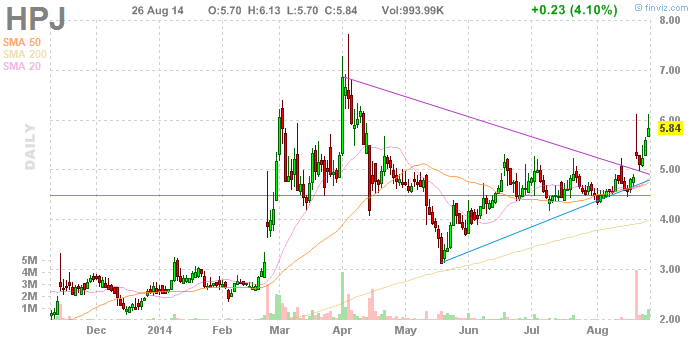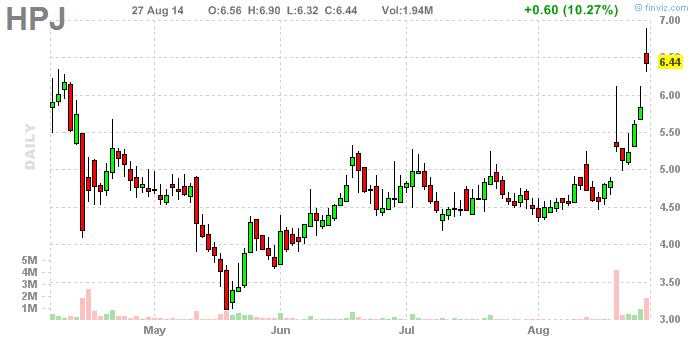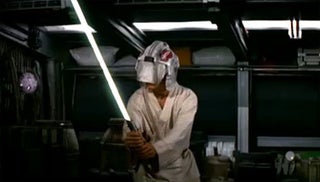Ode to the Home Run
This year I've made the following trading plan to guide me this year.
2018 resolutions:
A. Possible outcomes for trades (1) small loss; (2) push; (3) huge winner.
I can't be a home run hitter If I'm content hitting singles so I've taken the small win off the table I am perfectly willing to take a break even trade after I'm up 10 or even 20% on a stock to get a 50% or bigger gain.
B. No partial sales: If I'm in a huge winner, I'm not going to minimize it because I'm insecure in my trade.
Taking partial profits turns a home run into an average trade. The psychological comfort of "locking in" some profits is too costly. Every year only a few trades will account for the vast majority of the return. The other small wins and small losses cancel themselves out or are insignificant so I need to make sure that my big wins make as much money as possible.
C. Build positions at pullbacks to moving averages.
I need to think differently than everyone else and not be positioned with the crowd. The crowd buys obvious breakouts.
D. Target 100% + moves.
A truly leading stock should be able to at least be able double from its base. If it can't do that, it is an also ran. I will be in leading stocks based on price and volume and I must give them a chance to work.
I recognize that there will be times when I may need to step aside in a stock to manage risk, I will view a re-entry as a continuation of the original position.
E. Aggressively Manage Risk.
There's no point to hit home runs if I give up runs on defense. A break even trade after being up 20% is acceptable. A .01 loss after being up 20% is not. I've had "wins" this year already that other traders would brag about, but I've taken the position off not to lock profit, but to manage risk. For example, not enough cushion for upcoming earnings.
2017 was a successful year for me as I posted decent profits mostly from swing trading. I also realized that there were limitations to my approach that would keep me from being a great trader.
The approach I had used in 2017 was to identify strong stocks buy the breakouts using a fishhooksetup or a slingshot (on the pullback and then swing those for gains on) Take profits on the way up.
For example, my most profitable trade (or series of trades, which combined according to my brokerage statements was a 108% return) was in AAOI:
I hit the entry perfectly (Fishhook entry) , added size and phased out. I got tons of "atta boys" from my trading friends which include some of the very best swing traders (guys that are asked to speak at national seminars). Yes, I made quite a bit of money on this trade, and on the original position I took at 63 as well that I took another $9 out of but I realized that in some ways this was a terrible approach for several reasons.
The biggest mistake was I treated this as just another trade. An AAOI type stock will come around only 4-5 times a year, had I traded it better, this stock alone should have given me triple digits on the year $30 to 100 in a liquid and holdable stock. But I only had a normal position, which I minimized by selling on the way up with partial sales.
The second problem was I fell victim to my own psychological needs. At the time the position started running, I remember thinking that I was doing a great job because I was up over 10 points and I would usually start selling with a 10% gain and now I'm up 30%+. This type of thinking is flawed. It was the fear of losing my paper gains that caused me to sell when there was no reason to.
I, like many traders, had (yes I'm using past tense) a problem holding our winners. For me, it was this need to constantly hit winning trades. We talk about our win rate, average win, average loss, % of R. I used to track that shit religiously. I would sell a stock (like AAOI and some others) simply because the numbers would look really good on my spreadsheet.
You know what looked good on my spreadsheet? A $7 point gain like this:
But the spreadsheet would not reflect how terrible of a trade my $7 point win in TREE was:
Nonetheless, many traders talk about how important it is to hit singles. Bullshit!
Every baseball fan know that Giancarlo Stanton was the home run champ with 59 homers but who hit the most singles? -- Crickets. That's because no one gives a shit. It's the long ball that makes legends.
So while the singles hitters are going keep celebrating their "wins", I'm swinging for the fences this year. I'll foul off dozens of pitches in the process, and I won't care. My defense will be excellent and I'm going to continue crush the damn ball when I get my pitch..
I'll let the other guys count their singles, this year I'm tracking only my home runs.
Here's number 1:
I recognize this is a gambling type stock but wow did I like that chart. I sold through the $30 break for a big gain.
Good speculation,
Scot1and
2018 resolutions:
A. Possible outcomes for trades (1) small loss; (2) push; (3) huge winner.
I can't be a home run hitter If I'm content hitting singles so I've taken the small win off the table I am perfectly willing to take a break even trade after I'm up 10 or even 20% on a stock to get a 50% or bigger gain.
B. No partial sales: If I'm in a huge winner, I'm not going to minimize it because I'm insecure in my trade.
Taking partial profits turns a home run into an average trade. The psychological comfort of "locking in" some profits is too costly. Every year only a few trades will account for the vast majority of the return. The other small wins and small losses cancel themselves out or are insignificant so I need to make sure that my big wins make as much money as possible.
C. Build positions at pullbacks to moving averages.
I need to think differently than everyone else and not be positioned with the crowd. The crowd buys obvious breakouts.
D. Target 100% + moves.
A truly leading stock should be able to at least be able double from its base. If it can't do that, it is an also ran. I will be in leading stocks based on price and volume and I must give them a chance to work.
I recognize that there will be times when I may need to step aside in a stock to manage risk, I will view a re-entry as a continuation of the original position.
E. Aggressively Manage Risk.
There's no point to hit home runs if I give up runs on defense. A break even trade after being up 20% is acceptable. A .01 loss after being up 20% is not. I've had "wins" this year already that other traders would brag about, but I've taken the position off not to lock profit, but to manage risk. For example, not enough cushion for upcoming earnings.
Why I shifted my philosphy and trading plan
2017 was a successful year for me as I posted decent profits mostly from swing trading. I also realized that there were limitations to my approach that would keep me from being a great trader.
The approach I had used in 2017 was to identify strong stocks buy the breakouts using a fishhooksetup or a slingshot (on the pullback and then swing those for gains on) Take profits on the way up.
For example, my most profitable trade (or series of trades, which combined according to my brokerage statements was a 108% return) was in AAOI:
I hit the entry perfectly (Fishhook entry) , added size and phased out. I got tons of "atta boys" from my trading friends which include some of the very best swing traders (guys that are asked to speak at national seminars). Yes, I made quite a bit of money on this trade, and on the original position I took at 63 as well that I took another $9 out of but I realized that in some ways this was a terrible approach for several reasons.
The biggest mistake was I treated this as just another trade. An AAOI type stock will come around only 4-5 times a year, had I traded it better, this stock alone should have given me triple digits on the year $30 to 100 in a liquid and holdable stock. But I only had a normal position, which I minimized by selling on the way up with partial sales.
The second problem was I fell victim to my own psychological needs. At the time the position started running, I remember thinking that I was doing a great job because I was up over 10 points and I would usually start selling with a 10% gain and now I'm up 30%+. This type of thinking is flawed. It was the fear of losing my paper gains that caused me to sell when there was no reason to.
I, like many traders, had (yes I'm using past tense) a problem holding our winners. For me, it was this need to constantly hit winning trades. We talk about our win rate, average win, average loss, % of R. I used to track that shit religiously. I would sell a stock (like AAOI and some others) simply because the numbers would look really good on my spreadsheet.
You know what looked good on my spreadsheet? A $7 point gain like this:
But the spreadsheet would not reflect how terrible of a trade my $7 point win in TREE was:
Nonetheless, many traders talk about how important it is to hit singles. Bullshit!
Every baseball fan know that Giancarlo Stanton was the home run champ with 59 homers but who hit the most singles? -- Crickets. That's because no one gives a shit. It's the long ball that makes legends.
So while the singles hitters are going keep celebrating their "wins", I'm swinging for the fences this year. I'll foul off dozens of pitches in the process, and I won't care. My defense will be excellent and I'm going to continue crush the damn ball when I get my pitch..
I'll let the other guys count their singles, this year I'm tracking only my home runs.
Here's number 1:
I recognize this is a gambling type stock but wow did I like that chart. I sold through the $30 break for a big gain.
Good speculation,
Scot1and





















